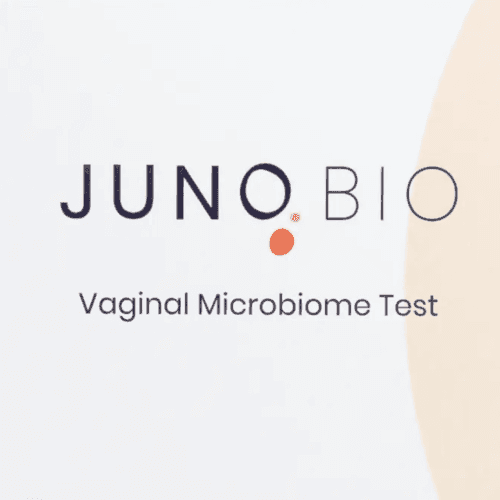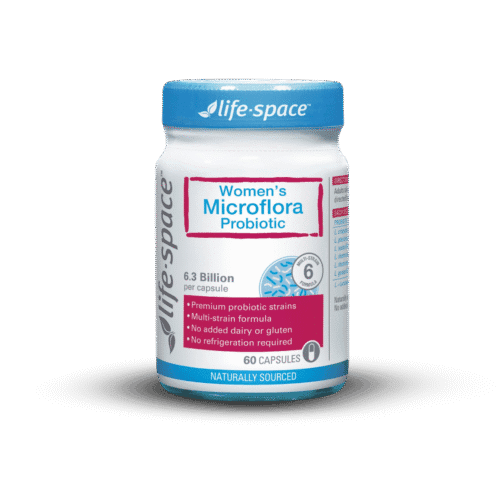Lactulose is food only for your protective flora, lactobacilli, so they thrive, multiply and colonise, displacing pathogens. To use lactulose alone, you must have some healthy lactobacilli species present.
This treatment is suitable for
- Those with a diagnosis of bacterial vaginosis (BV) or unexplained vaginal infection or dysbiosis
Who shouldn’t use lactulose
- Do not use lactulose if you may have cytolytic vaginosis (CV) (lactobacilli overgrowth syndrome) or aerobic vaginitis (AV) – it may make these conditions worse
- You are allergic to dairy
- If you are lactose or casein-intolerant, the treatment should not cause issues
What you’ll need
My Vagina kits contain everything you need to get started.
Your kit includes
- 50mL pure vagina-safe lactulose liquid
- 50 pure vegetable vagina-safe capsules
- Capsule applicator
Understanding lactulose
1. Lactulose – prebiotic (good lactobacilli food)
Lactulose vaginally boosts colonies of healthy lactobacilli while deterring pathogens. Lactulose selectively feeds lactobacilli, starving most pathogens. Lactulose can feed some AV-causing pathogens, so avoid the 3 L’s in AV as a general rule.
Lactulose is an inert sugar (lactose), a prebiotic, derived from heated cow’s milk. Lactulose is sold as an oral treatment for constipation (a laxative) and medically for some liver conditions.
Treatment schedule
Use the lactulose vaginally as per your need, for example, if you have symptoms only after your period, use lactulose vaginally 1-2 capsules per night for 3-5 nights before your period is due to start.
Keep tabs on your pH and symptoms and don’t do more treatments if your pH is 3.8-4.5 and you don’t have symptoms.
If after seven days of vaginal treatments you still have symptoms or your pH is above 4.5, do another week, and so on. Remember a pH of 4.5 is respectable!
Repeat vaginal treatment as needed.
DO NOT OVERUSE LACTULOSE!
You don’t want to end up with lactobacilli overgrowth syndrome, which is characterised by itching, burning and a thick, white discharge that mimics a yeast infection.
Applying vaginal treatments
- Fill a capsule with lactulose.
- Use 1-2 capsules deep vaginally before bed
If using as an irrigation, use 2ml lactulose and 8ml water, mix well in a small glass. Suction mixture into the syringe and insert deep vaginally. Tilt hips upwards. Let it run out onto a towel or in the bath or shower, two applications per day.
When to start treatments
If you do not get periods, start anytime you like. If you are still menstruating, start the day you stop bleeding to get the most period-free days of treatment possible.
When to stop treatments
It’s important to stop every seven days and do a pH and symptom check. Write down and rate your symptoms and pH before you start, and keep a diary.
Every seven days, repeat the process, adding any new symptoms and rating. You can check your pH during treatments, but expect it to be 4.0 or 4.5 because of the lactobacilli (they produce lactic acid). The reading will only be accurate after 2-3 days without treatments.
You should be checking your pH! If you don’t have strips, order vaginal pH strips now.
When you have no symptoms and your pH is 4.0 – 4.5, stop all treatments except the oral lactoferrin, keep checking pH, and see what happens. If the clearance lasts, congratulations!
If you start to experience symptoms of lactobacillus overgrowth such as itching, thick white or clumpy discharge, stop using lactulose and see if it dissipates on its own. An overgrowth isn’t the end of the world and does NOT mean you have CV, so let it be and see how you go.
Tips and tricks
- Don’t freeze lactulose – it doesn’t freeze well and will just become more viscous (and harder to use as a liquid)
- If you have vulvar or anal symptoms, rub the mixture into affected areas as well
- You can prepare vegetable capsules a few days in advance, but if you live in a humid environment, keep them in an airtight container with a moisture-absorbing sachet or they may go soft – do an experiment
What to expect
Each of you is a bit different in terms of what will happen, but the theory is simple: feed the lactobacilli so they proliferate and kill off pathogens and unhealthy biofilms as they go.
Lactulose itself is a sugar syrup and doesn’t cause irritation, but the increase in lactobacilli counts or the use of a probiotic can cause irritation. If you find lactulose irritating, stop using it, reduce the dose or change your method of administration.
Lactulose is a great treatment for those of you that have sensitive vaginas who don’t tolerate other treatments very well, but it’s not magic and caution is advised in regards to AV and lactobacilli overgrowth.
How to tell if you have lactobacillus overgrowth
If you start to experience different symptoms such as itching, burning or yeast-infection-like symptoms after a while of using lactulose vaginally, you may have ended up with a temporary lactobacilli overgrowth.
In the right circumstances, this can turn into a condition known as cytolytic vaginosis where it becomes difficult to dislodge a single species that has taken over, mainly Lactobacillus crispatus, sitting at above 97 per cent on a microbiome test. Take a break from all treatments for a few weeks and see if it resolves by itself.
If it resolves and your vaginal symptoms do not return, congratulations! You’ve successfully recolonised. CV can cause unpleasant symptoms that should resolve once you stop putting probiotics, lactulose or milk kefir into your vagina or mouth.
Your body will adjust the balance of microbes based on food availability. Resolution might take a few weeks. If it doesn’t resolve, look into histamine intolerance or book in for an appointment to talk it through.
Safety and cautions of lactulose
Lactulose is usually safe to use vaginally, but as with all treatments, if you experience irritation, stop using it, take a treatment break, or reduce the dose.
Avoid using in AV, CV and with histamine intolerance.
References1
- 1.Collins SL, McMillan A, Seney S, et al. Promising Prebiotic Candidate Established by Evaluation of Lactitol, Lactulose, Raffinose, and Oligofructose for Maintenance of a Lactobacillus-Dominated Vaginal Microbiota. Elkins CA, ed. Appl Environ Microbiol. Published online March 2018. doi:10.1128/aem.02200-17







